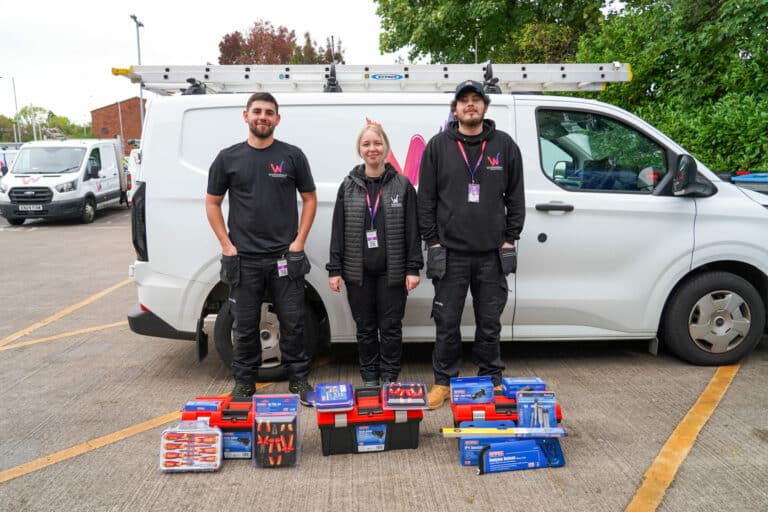Ugandan coffee producers who champion sustainable farming, empowering women and transforming local communities will be making their first group appearance at the annual Manchester Coffee Festival (9am – 5pm, daily from November 14 until 16).
Uganda Coffee will join more than 50 other producers from the UK and around the globe at Bowlers Exhibition Centre, Trafford Park, to showcase their delicious beans and pioneering growers.
The festival will offer the perfect opportunity to learn more about the rich heritage and exceptional flavours of Ugandan coffee, as well as try the coffee for yourself. There will be live competitions, talks, panel discussions and live DJs.
With support from the UK Trade Partnerships Programme, Ugandan coffee producers are taking their message directly to British coffee drinkers and industry players, inviting them to discover the rich flavours and stories behind Uganda’s specialty coffee.
Quality coffee beans
Uganda is known as the “Pearl of Africa,” and offers one of the finest topographies in the world for growing quality coffee beans.
From the fertile volcanic slopes of Mount Elgon in the east to the Rwenzori Mountains in the west, each region boasts unique growing conditions and flavours.
The coffee grown on its soil has an exquisite, distinct taste, and the country has been harvesting the beans for over 200 years.
Robusta coffee beans first started growing in the wild forests bordering Lake Victoria over two hundred years ago, and by the late 19th century, Ugandan Robusta was finding its way into European markets. This was followed by Arabica beans that were introduced to the country by missionaries in the 20th century.
Today, coffee is a vital part of Uganda’s economy, employing over 1.7 million households and contributing significantly to foreign exchange earnings. Uganda is the 7th largest coffee producer globally.
However, a cup of Ugandan coffee is hard to find on UK soil, with the coffee market dominated by imports from Brazil, Colombia, Ethiopia, and Vietnam.
High consumption
According to the British Coffee Association, coffee consumption in the UK is among the highest in the world, with an average of 2.3 cups per person per day, yet Ugandan coffee accounts for a mere 1% of the UK’s total coffee imports – and Uganda Coffee is hoping to change that.
The country’s young generation of pioneering growers are dedicated to driving community uplift, including support for local schools, financial education and youth programmes. Their practices are steeped in sustainability from bean to cup, with agroforestry, climate-smart agriculture and initiatives such as shade-planting and beekeeping in place. Not to mention many farms have a female-led workforce, who they upskill with technical training and fair wages.
For example, Mountain Harvest, set on the ridges of Mount Elgon, is dedicated to empowering women through coffee production and has grown the number of women it works with from 13% in 2019 to 41% in 2025.
Whilst Ankole Cooperative Union, located in the fertile volcanic soils of Southwestern Uganda, at altitudes ranging from 1400 to 1900 metres above sea level, is committed to developing local communities and has helped fund schools in the villages they work with. Its member farmers each manage small-scale farms averaging 1.5 acres, carefully tending to 600-700 coffee trees. Their farming practices include maintaining healthy soils, pruning the coffee bushes, and intercropping with nutrient-rich trees and plants such as bananas, providing partial shade and mulch for the soil. With their high altitude these farms produce coffee that exhibits a distinctive cup profile with floral, fruity, and sweet notes.
Zamani Coffee was founded as a movement to empower small-scale farmers. Its beans are cultivated by 250 dedicated small-scale farmers in the Sipi region, who weave traditional methods with innovation to nurture the land that sustains them. Zamani provides ongoing education on sustainable farming and post-harvest practises to help achieve higher profitability whilst looking after their environment. It established the ‘Sipi Zamani Coffee Farmers Savings Cooperative’, a platform that empowers farmers to save, plan and deliver community-driven initiatives.
Ugandan Coffee will make its mark with British coffee connoisseurs with a conscience in 2025 and beyond.
Where to find Ugandan coffee
Ugandan coffee is currently being imported by specialist coffee traders including the following who supply to roasters across the North West and wider areas in the UK:
Kwezi Coffee
Co-founded by Barbara Mugeni and Pamella Kampire, second-generation coffee experts, Kwezi Coffee is built on a legacy of passion and perseverance. Inspired by their parents’ expertise in coffee farming and operations, Barbara and Pamella have set out to build a brand that champions women and builds a sustainable future.
From Uganda’s high-altitude regions, Kwezi Coffee offers specialty coffee that embodies the country’s diverse landscapes and rich flavours. It works closely with over 2,700 farmers – 60% of whom are women, to produce coffee that delights and inspires.
Barbara and Pamella’s mission is to source, process, and export the finest Ugandan coffee while empowering women and youth throughout the coffee value chain. Through fair pricing, sustainable practices, and a relentless dedication to quality, they aim to inspire a new generation of leaders in the coffee sector.
Kwezi Coffee believes in creating meaningful change beyond the cup. This includes:
- Sustainability: Promoting organic farming, soil health, and biodiversity through shade trees, cover crops, and natural pest control.
- Community empowerment: Providing fair wages, technical training, and growth opportunities for farmers, with a focus on women and youth.
- Innovation: Investing in energy-efficient technologies like solar-powered equipment and eco-friendly waste management practices.
In addition, Kwezi coffee has a number of community initiatives that include:
- Training workshops on mulching, pruning, and soil erosion management to improve yields.
- Collaboration with local agribusinesses to share resources and best practices.
- Supporting beekeeping and livestock farming to create diversified income streams.
Clarke Farm
Nestled in the scenic Kyarusozi Parish in Rwenzori Region’s Kyenjojo district in Western Uganda, Clarke Farm is a family-owned, eco-friendly farm dedicated to sustainable agriculture and premium-quality coffee production.
Clarke Farm was born out of a vision to create a meaningful impact in rural Uganda. Founded by Dr. Ian Clarke, a dual Irish-Ugandan citizen, the farm builds on decades of commitment to improving healthcare and education in the region.
Dr. Clarke’s journey to coffee farming was driven by a desire to address rural poverty and empower women and young people. Coffee, Uganda’s most valuable cash crop, became the vehicle for change, creating jobs, increasing incomes, and opening doors to education for countless families.
Clarke Farm is committed to sustainably producing high-quality, single-origin washed Robusta coffee. This exceptional coffee is grown alongside a diversity of other crops, including Irish seed potatoes, matooke (a type of banana), mangoes, macadamia, bamboo, and maize.
Beyond coffee, the farm is dedicated to agroforestry, with eucalyptus plantations and indigenous tree corridors carefully integrated within the topography. This thoughtful blend of agriculture and forestry underlines Clarke Farm’s commitment to climate-smart farming practices that support local ecosystems.
Dr Clarke said: “If one can make an impact by getting cash and employment into this rural community, particularly for women and girls, one can increase household income and the ability of families to send their children to school, which will break the cycle of generational poverty.”















